How much time do you spend every day just doing repetitive tasks? This is a problem for almost any business and any employee– whatever your role is, there are some repetitive tasks that eat up your time every single day.
For example, a survey by Smartsheet found that over 40% of information workers spend more than a quarter of their workweek on repetitive tasks.
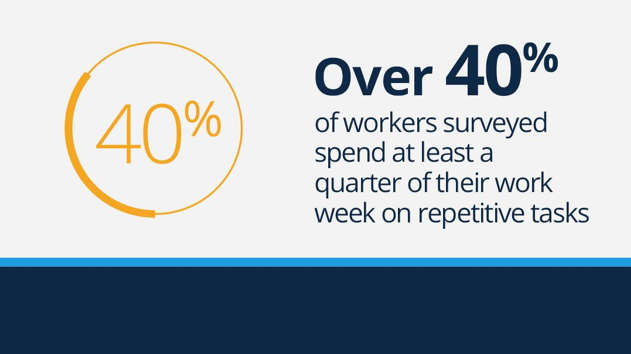
However, with a good team management and workflow tool, you can cut down on repetitive tasks and collaborate more efficiently so that everyone on your team will be more productive, whether they full-time, in-house employees, or a freelancer halfway across the globe.
And by boosting your productivity as a business, you leave more time to focus on growing your business and keeping your customers happy.
In this blog post, I’m going to talk about 5 useful team management and workflow tools that you can use for your business:
1. Monday.com
This workflow tool allows you to manage your tasks with a simple and highly effective method: by using boards.
You can create as many boards as you want and leverage them in various ways; the easiest way to get started and see what you can do with Monday.com is to check out the ready-made templates:
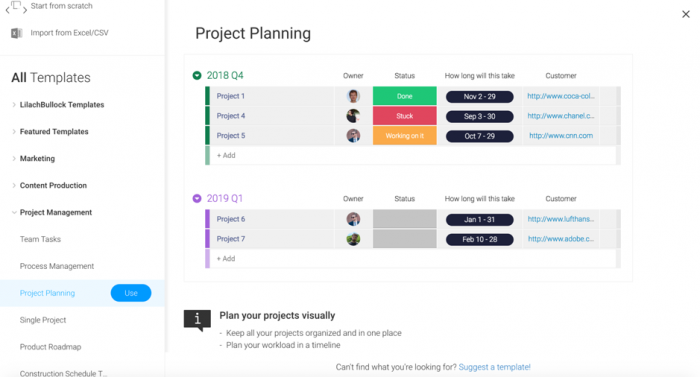
Among these templates, you can find:
- Marketing templates
- Social media and content marketing calendars
- Content production management
- Freelancer management
- Design projects overview
- Project management
That being said, you can build pretty much board you want, for whatever purpose; you can also then invite people to your boards – not just your team, but also any “outsiders” you want.
In fact, one really cool way to use Monday.com is to share progress and keep customers up to date on your work, if needed. You can easily share files and documents with them and integrate with Dropbox, for example, ask for their feedback, show them a visual timeline of the work you carried out and so on.
To aid the flow of information, Monday.com allows integration with tools like Jira, Gmail, Slack, Google Drive, Dropbox, Zapier, and others.
To start a workflow on Monday.com, you can create a project using one of the ready-made templates, which you can then customize (or create your own from scratch). Here, you can assign the team lead and members and you can see an overview of your project from the beginning to the end:
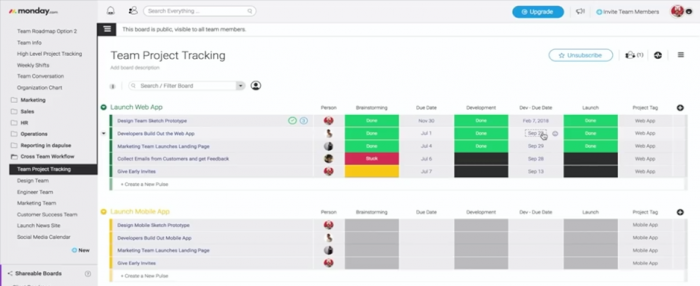
When you click on a task in the workflow, you can get a weekly update of activities. The status of a task is also obvious whether it’s done, working on it, or stuck.
If your project needs different teams to work on it, you can also create a weekly workflow of activities that each team will carry out towards the progress of your project.
2. KiSSFLOW
With Kissflow, you have a plethora of workflow applications to pick from. One unique part of this tool is that it provides extensive customization options. This means you can make your workflows as simple or as complex as you want them to be.
On your boards, you have the option to add over 14 field types depending on the processes you need for your workflow. If you already have an idea of what you want your workflow to look like, then a tool like Kissflow will help you to build it.
Added to this, it integrates with over 50 apps to help you with various functions, such as purchase requests, employee onboarding, and other relevant business day-to-day functions.
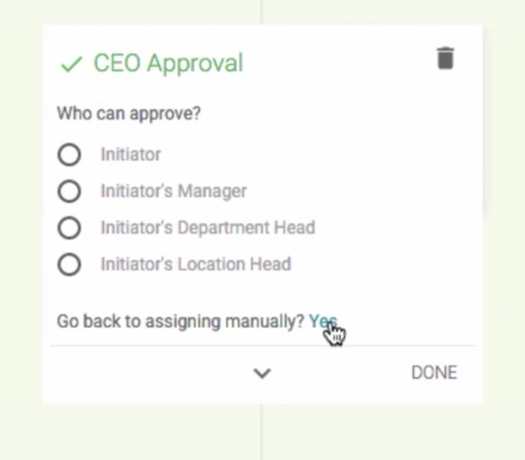
To create your workflow, you can either allow all team members to open your apps or restrict access to select members; apart from this, you can also set team members that can approve tasks in a particular workflow.
To create a task in your workflow, you’ll have to add team members who will work on this task. It provides a simple workflow and you can use its drag-and-drop editor to add as many tasks as you want.

3. Wrike
Even though Wrike can certainly be used by smaller teams, it’s more well-suited for enterprises. It provides a workflow software that allows you to auto-assign workflows in different projects, folders, and templates.
If you want very detailed reports about your workflows, this tool will certainly help. You can choose one of its ready-made report templates or create a custom template to suit your particular needs. It also provides real-time reporting and can notify you of reports updates.
Wrike integrates with tools like GitHub, Jira, and other apps.
Account admins can create custom workflows to reflect their specific team; plus, the tool also allows you to create workflows for different teams that will work on a project – great for bigger projects:
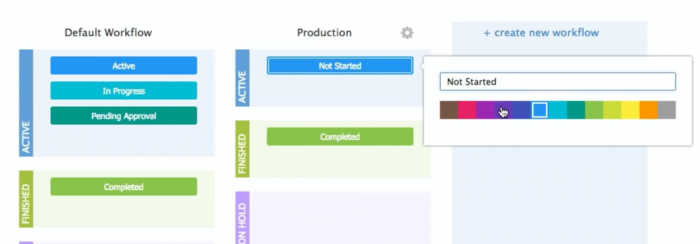
You can assign different tasks in your workflow to your various team members. When you click on each of the tasks, you can also see the status and if there are any notes added, which is great for keeping track of all your projects and tasks:

4. Hive
Hive is a team collaboration tools that can handles teams of 10 and up to 1,000 members, providing a centralized platform for organizing your workflow, no matter how big or small your team is.
Plus, it provides analytics and time-tracking abilities to give you a clear view of your team’s progress in their tasks. With its flexible ‘views’ options, you can check both your team members’ work and any projects they have coming up in the future.
Hive also provides full email integration which means you can receive and send emails to team members from the app.
To create a workflow on Hive, you can use one of its templates to get you started:

After selecting your template, you have an overview of your workflow. You can select a type of view and also add important tasks to your workflow here:

For each task, you can add all the necessary details that will help your team members perform the task. There are options to assign tasks to a team member, add attachments from different sources, set a status, set an alarm, and any other details necessary for the task.
5. Asana
This is a popular tool that provides simple workflows for teams. It uses kanban-style cards similar to Trello. And if your team already uses Trello, it’s worth pointing out that you ca integrate your boards with Asana. Added to Trello, Asana integrates with over 100 other applications.
Asana allows you to create reports, see visual progress charts of your workflows, and customize your main dashboard to contain the information you want. You can also turn your processes into templates for future use and set up automatic status updates. Along with these, there are various communication tools that aid with team collaboration during projects.
When you start a new workflow in Asana, you can add your team members for the project, as well as assign one of your team members as the project coordinator:
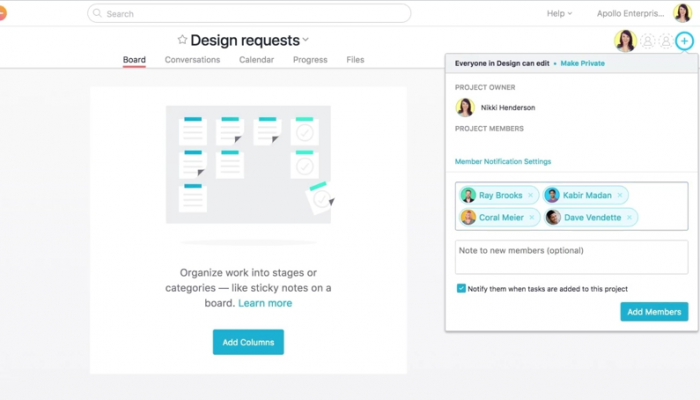
After creating your workflow, you can organize your tasks by date, teammate, stage and a few other options. For each task, you can add custom fields according to your needs; for instance, while assigning a task, you can add text to create a brief, set a due date, attach files, and set the task’s priority. Added to these features, you can also check the timeline of activities for each task:
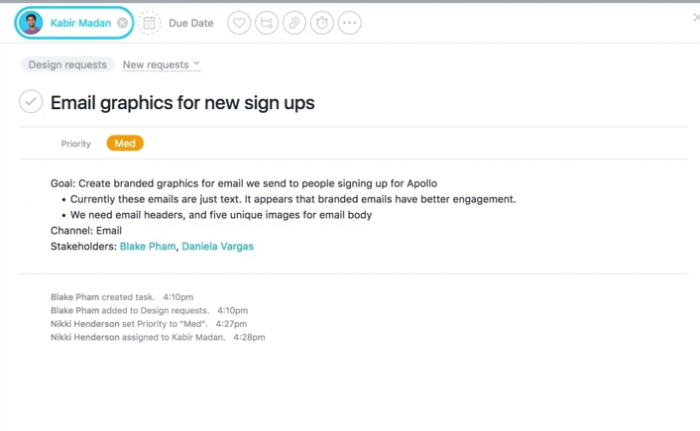
Conclusion
Team management and workflow tools help to enhance collaboration between team members, they make project execution easier and they save time.
Whatever the size of your business or your team, using a workflow tool is a necessity rather than a luxury. After all, an effective team ultimately means you can offer a better service to your customers – and that you have the time and resources you need to grow your business.



